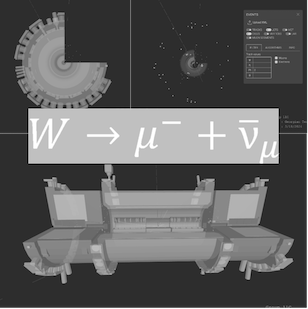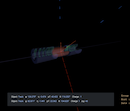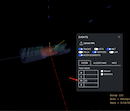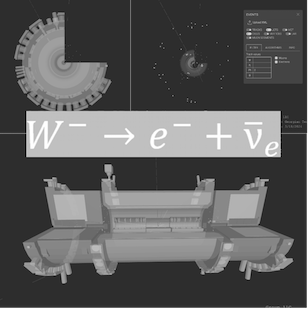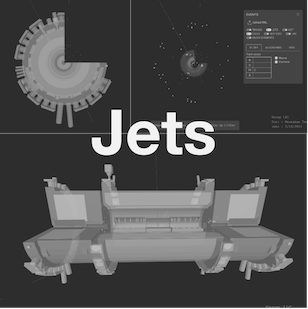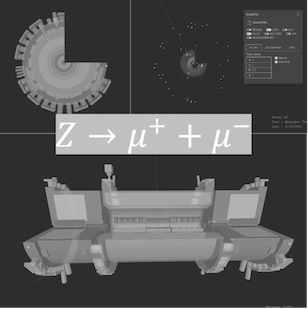Identifying Events with Tracer
Here, you'll learn how the events mentioned before look in Tracer 3D Display.
You will get to use your knowledge about identifying elementary particles.
You'll learn to choose events with a W particle as signal events and to distinguish them from the background events. Again, you'll find explanations about this in the form of a picture gallery.
Processus "signal"
-
 In the end view you can see the signature of an electron with high transverse momentum and a neutrino (Missing ET = 27 GeV) going in the opposite direction.
In the end view you can see the signature of an electron with high transverse momentum and a neutrino (Missing ET = 27 GeV) going in the opposite direction.
-
 L'information sur la trace laissée par le lepton nous dit que c'est vraiment un électron (regardez en particulier le signe négatif de la charge électrique).
L'information sur la trace laissée par le lepton nous dit que c'est vraiment un électron (regardez en particulier le signe négatif de la charge électrique).
Processus de bruit de fond
-
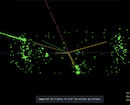 Cet événement se démarque des événements "signal" de deux manières : 1) des gerbes de particules sont visibles et 2) la valeur de l'impulsion transverse manquante est trop faible pour qu'un ou plusieurs neutrinos aient été produits.
Cet événement se démarque des événements "signal" de deux manières : 1) des gerbes de particules sont visibles et 2) la valeur de l'impulsion transverse manquante est trop faible pour qu'un ou plusieurs neutrinos aient été produits.
-
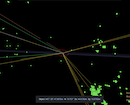 This picture shows an even more enlarged view of the event.
You can see very well how the bundles of particles originate from the interaction vertex (red).
This picture shows an even more enlarged view of the event.
You can see very well how the bundles of particles originate from the interaction vertex (red).
-
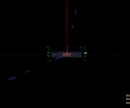 Cette image d'un événement montre la désintégration d'un Z, la particule électriquement neutre médiatrice de l'interaction faible. Ce Z s'est immédiatement désintégré en une paire muon-antimuon.
Cette image d'un événement montre la désintégration d'un Z, la particule électriquement neutre médiatrice de l'interaction faible. Ce Z s'est immédiatement désintégré en une paire muon-antimuon.
-
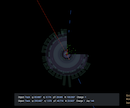 As you can see from this view into the direction of the proton beam muon and anti-muon going back to back.
Both particles might arise from one particle that decayed after its creation.
Cross-checks are always better in order to proof the assumption that a Z particle was produced.
Both muons have distinct electric charges.
As you can see from this view into the direction of the proton beam muon and anti-muon going back to back.
Both particles might arise from one particle that decayed after its creation.
Cross-checks are always better in order to proof the assumption that a Z particle was produced.
Both muons have distinct electric charges.
-
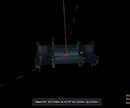 Furthermore there is no missing transverse momentum at all, meaning: A neutrino was probably not produced.
Furthermore there is no missing transverse momentum at all, meaning: A neutrino was probably not produced.
